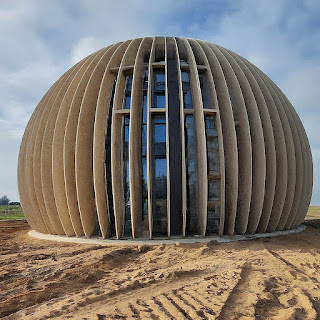Please visit my web page "Urban Tenets" at https://urbantenets.nl/
***********************************************
🏭When not producing
anything is not an answer and when shutting down industries, businesses and
operations may not be an option!
Then we need a statutory mechanism, moral pivot, and
disruptive but viable business model, where every new and existing industry and
business may still continue to function, but upskill themselves at the facility
scale (and sectoral level) and devote up to half (not a token) of their
capacity, resources, and skills to make things right, neutralizing the
externalities that another half of their current business model or
establishment generates. To be achieved either through circular procurement,
reverse logistics, repurposing production, decarbonization, resource
efficiency, or carbon offset.
This is highly important in today’s race of production and
overproduction, as by any estimate for example, as on date -
👔There must be enough
clothing stacked in the warehouses, stores, wardrobes, second-hand market, and
on the way to landfill, that may serve what the entire world population
requires for the next month or even a year or more
🏢There must be enough sum
total square feet of real estate inventory, to give a respectable unit area of
habitation to everyone in the world, considering all the vacant and
under-utilized residential stock, all the extravagant properties, and all other
land use that sits idle half of the time.
And more.
All of this that is currently being done, to serve inflated
demand, and due to lack of a mechanism to recirculate material that is
considered waste, and the inability to manage mismatched resources.
A new way of industrial and business operation will be a
welcoming change!
Author: Anoop Jha
************************************************
[Recent update
Starting 2024, launching urban management, interior design, home decor and commissioned artwork services in the Netherlands, serving local as well as international remote clients.
Please Note, that I am also conducting a FREE 45-minute online individual consultation on your interior design and home decor needs and aspirations if you are in the Netherlands or even internationally. Drop me an email at anoop.jha@gmail.com
Please visit my web page "Urban Tenets" at https://urbantenets.nl/
Instagram interior design page @urbantenets
Instagram fine art and illustration page @urbanoregional
************************************************
#Circulareconomy #urbanplanning #urbanmanagement
#urbandevelopment #economics #finance #industries #comemrce #World #EU #Europe
#netherlands #Amsterdam #Rotterdam #Hague #DenHaag #Delft #Lieden
#Sustainability #Resislience #Climatechange







.jpg)



.jpg)

.jpg)
.jpg)
.jpg)





